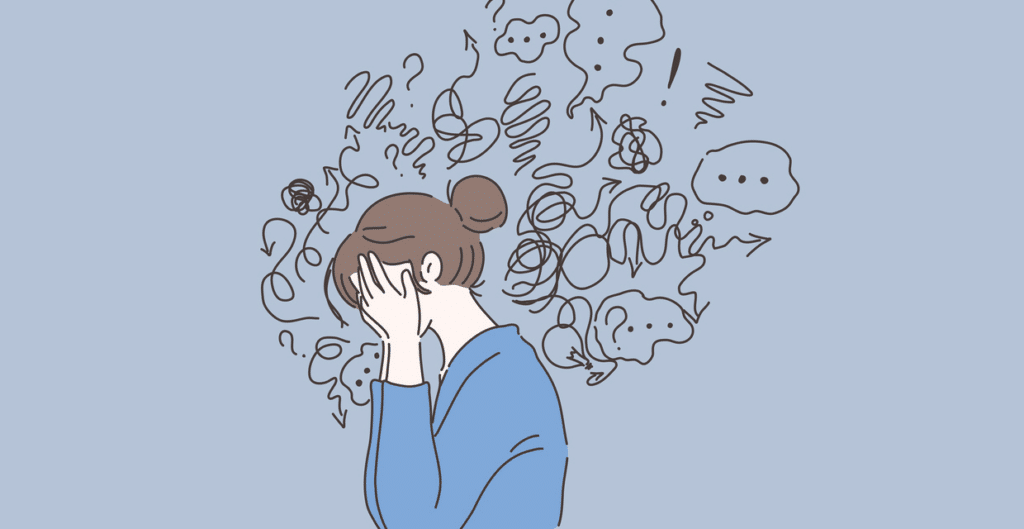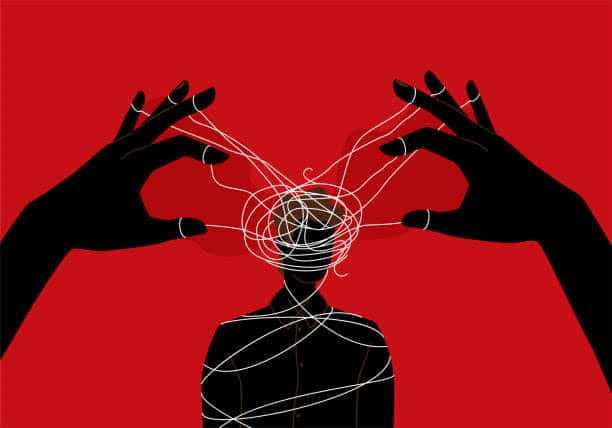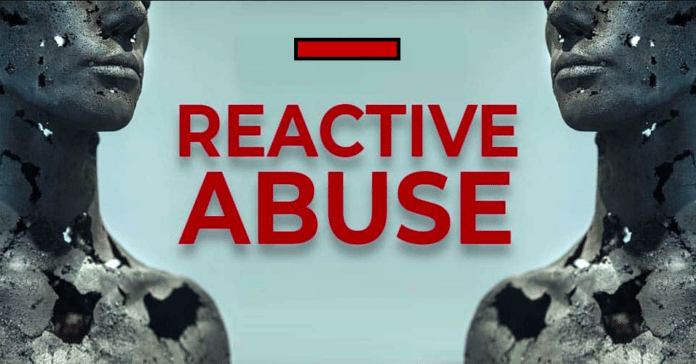Often, relationships can be plagued with various reasons, and one popular one is Abuse. Abuse takes place in various ways other than physical. Emotional abuse may also affect a person’s self-esteem, image, and much more. Reactive abuse is something everyone needs to know about.

You’ve seen movies where a particular person is getting abused- whether emotionally or physically; the person would take in all of the abuse, but when the person reacts to his/her abuser, it is called Reactive Abuse.
Reactive abuse refers to a particular pattern of behaviour exhibited by an individual in response to being subjected to prolonged emotional, psychological, or verbal abuse. It is a response to ongoing maltreatment.
When someone experiences consistent abuse, they may reach a breaking point where they react aggressively or defensively towards the abuser. This reaction usually manifests in shouting, cursing, name-calling, or even physical aggression.
The individual’s response may be an attempt to regain control of the situation, defend themselves, or simply release the built-up frustration and anger caused by the ongoing abuse.
It is important to recognize that reactive abuse does not justify or condone the original abusive behaviour. Sometimes, an Abuser may use reactive abuse to further manipulate or shift blame onto the victim, arguing that they are the ones who are truly abusive.
SEE: 21 Questions For A New Relationship
Reactive abuse example
An example of reactive abuse could be a situation where a person is constantly subjected to verbal insults, humiliation, and condescending by their romantic partner.
Of course, this abuse can affect a person’s self-esteem, and they would reach a point of extreme frustration and lash out in response to the continued mistreatment.
Signs of emotional abuse

Emotional abuse involves the persistent use of words, actions, or lack of actions to manipulate, control, degrade, or intimidate someone. It doesn’t leave physical scars, but the effects can be just as damaging to a person’s well-being. Here are some signs that may indicate emotional abuse:
1. Constant criticism: The person is subjected to frequent, harsh criticism, insults, or belittling comments, which undermine their self-esteem and sense of self-worth.
2. Humiliation and ridicule: The individual is regularly subjected to public embarrassment, mockery, or humiliation, either privately or publicly.
3. Manipulation and control: The abuser uses manipulative tactics to control and dominate the person’s thoughts, feelings, and actions. They may employ guilt, threats, gaslighting or isolation from friends and family.
4. Blame and guilt: The abuser consistently blames the person for any problems or shortcomings in the relationship, making them feel responsible for the abuser’s behaviour or emotions.
5. Emotional withholding: The abuser withholds affection, attention, or emotional support as a way to punish or manipulate the person. They may also use the silent treatment as a means of control.
6. Constant monitoring: The person’s privacy is invaded by excessively monitoring their activities, such as checking their phone, emails, or social media accounts without permission.
7. Threats and intimidation: The abuser uses threats of violence, and harm to oneself, loved ones, or possessions to intimidate and control the person’s behaviour or decisions.
8. Gaslighting: The abuser manipulates the person’s perception of reality, making them doubt their memory, judgment, or sanity. They may deny events or experiences, distort facts, or rewrite history to maintain power and control.
9. Isolation: The abuser systematically isolates the person from their support network, friends, and family, creating a sense of dependency on the abuser and diminishing their outside sources of validation and assistance.
SEE: 100+ Letting Go Quotes To Help You Move On
effects of emotional abuse

Emotional abuse can have profound and long-lasting effects on an individual’s mental, emotional, and physical well-being. Here are some common effects of emotional abuse:
1. Low self-esteem and self-worth: Constant criticism, belittlement, and humiliation can affect a person’s self-esteem, making them doubt their abilities, worthiness, and value as an individual.
2. Anxiety and depression can lead to the development of anxiety disorders or depression. The constant stress, fear, and feelings of worthlessness can take a toll on a person’s mental health.
3. Difficulty forming and maintaining relationships: The individual may struggle with trust, fear of judgment, and difficulty expressing emotions, leading to challenges in establishing and maintaining intimate connections.
5. Self-blame and self-destructive behaviours: Victims of emotional abuse often internalize the blame placed on them by the abuser. This self-blame can lead to self-destructive behaviours such as self-harm, substance abuse, or engaging in toxic relationships.
6. Social isolation and withdrawal: The person may withdraw from social activities and become increasingly isolated, which can further exacerbate feelings of loneliness and despair.
7. Physical health problems: Prolonged emotional abuse can also have physical consequences. Chronic stress and emotional distress can lead to a weakened immune system, sleep disturbances, headaches, and other stress-related health problems.
8. Risk of self-harm or suicide: The intense emotional pain experienced as a result of emotional abuse can increase the risk of self-harm or suicide. Feelings of hopelessness, worthlessness, and despair can become overwhelming for the individual.
SEE: Friendship Breakups: Why They Happen and Hurt So Much
Difference between reactive abuse, emotional abuse, and active abuse

Reactive, emotional, and active abuse are distinct concepts involving different abusive behaviour aspects.
Reactive abuse refers to a pattern of behaviour exhibited by a victim of prolonged abuse in response to the ongoing mistreatment, while Emotional abuse is a form of abuse that involves the persistent use of words, actions, or lack of actions to manipulate, control, degrade, or intimidate someone emotionally.
Active abuse involves the abuser actively engaging in behaviours such as physical violence, s3xual assault, verbal threats, or overt acts of aggression.
While emotional abuse and active abuse are intentional actions by the abuser, reactive abuse is a reaction to ongoing mistreatment. It is crucial to recognize that reactive abuse highlights the impact and toll that prolonged abuse can have on a person’s psychological and emotional well-being.
Related: Is It Normal For My Girlfriend To Hit Me?
How to deal with reactive abuse
Dealing with reactive abuse involves addressing the root causes and developing healthier coping mechanisms. It is crucial to prioritize your safety and well-being throughout the process. Here are some suggestions on how to approach reactive abuse:
1. Recognize the pattern: Awareness is the first step. Acknowledge that reactive abuse is a response to ongoing mistreatment and understand that it doesn’t justify or excuse the original abusive behaviour.
2. Seek support: Reach out to trusted individuals, such as friends, family members, or professionals like therapists or counsellors. They can provide validation, guidance, and support during this challenging time. Support groups for individuals who have experienced abuse can also be helpful.
4. Set boundaries: Establish and enforce personal boundaries to protect yourself from further mistreatment. Communicate your limits to the abuser.
5. Develop coping strategies: Focus on building healthier coping mechanisms to manage stress and emotional triggers. This can involve practising self-care, engaging in activities that bring you joy and fulfilment, and developing strategies for emotional regulation, such as deep breathing exercises or mindfulness practices.
6. Break the cycle: If you are in an abusive relationship, it may be necessary to consider leaving the relationship for your safety and well-being. Breaking free from the cycle of abuse often requires careful planning, support, and resources.
SEE: 100+ Best Haters Quotes to Deal with Negative People
How to heal from reactive abuse

Healing from reactive abuse involves a journey of self-reflection, self-care, and building healthier coping mechanisms. Remember, healing from reactive abuse is a unique and personal process.
It’s important to be patient and kind to yourself as you navigate the challenges and work towards reclaiming your emotional well-being. Here are some suggestions on how to begin the healing process:
1. Practice self-care: Engage in activities that bring you joy, relaxation, and a sense of fulfilment. This can include exercise, hobbies, spending time with loved ones, or practising mindfulness and meditation.
2. Build a support network: Surround yourself with supportive and understanding individuals who can provide validation, empathy, and encouragement on your healing journey.
3. Process emotions: Allow yourself to express and process the emotions associated with the abuse and reactive abuse. This may involve journaling, creative outlets such as art or music, or talking to a trusted friend or therapist.
4. Practice self-compassion: Be gentle and kind to yourself throughout the healing process. Recognize that reactive abuse is a response to prolonged mistreatment, and it does not define your worth as a person.
SEE: 10+ Habits Of Toxic Friends
Conclusion
Reactive abuse is a very poor word to describe an act of self-defence. In many cases, a victim cannot but react. This reaction is not abuse, but a physiological survival mechanism employed to protect the victim.
There is a form of abuse known as ‘mutual abuse’ in which both partners abuse each other. Reactive abuse is not mutual abuse, and it’s important to be aware that someone reacting to abuse is not an abuser: they are a victim with no other choice.
FAQS
what is reactive abuse?
Reactive abuse refers to behaviour or pattern of behaviour exhibited by an individual in response to being subjected to prolonged emotional, psychological, or verbal abuse.
Are narcissists reactive?
Narcissists can exhibit reactive behaviours, but it is important to differentiate between reactive behaviours and reactive abuse.
In terms of reactive behaviours, narcissists may react defensively or aggressively when their inflated sense of self-importance, fragile self-esteem, or need for admiration is threatened. They may respond with anger, hostility, or manipulation when they perceive criticism.
It’s important to note that narcissists generally do not take responsibility for their actions or acknowledge their role in provoking reactive behaviours from others. Instead, they may use instances of reactive abuse as further ammunition to maintain control, manipulate the situation, or portray themselves as the victim.
How do victims react to their abusers?
Victims of abuse can react to their abusers in various ways, and their reactions can depend on several factors, including the type and duration of abuse, individual personality traits, and coping mechanisms. Here are some common ways in which victims may react to their abusers:
1. Compliance: Some victims may comply with the abuser’s demands, try to meet their expectations, or engage in appeasing behaviours to avoid further harm or punishment.
2. Fear and avoidance: Victims may experience intense fear of their abusers and try to avoid confrontations or situations that may trigger abuse.
3. Withdrawal and isolation: Victims may isolate themselves from friends, family, and support networks out of fear or to prevent the abuser from exerting control over those relationships.
4. Emotional numbing: Prolonged abuse can lead to emotional numbing as a defence mechanism. Victims may disconnect from their emotions as a way to cope with the overwhelming pain and distress caused by the abuse.
5. Self-blame and guilt: Victims of abuse may believe that the abuse is their fault, leading to feelings of guilt, shame, and diminished self-worth.
6. Reactive abuse: In some cases, victims may exhibit reactive abuse, which is a response to ongoing mistreatment. Reactivity can manifest as outbursts of anger, defiance, or aggressive behaviour, as the victim attempts to regain some sense of control or assert boundaries.
7. Stockholm Syndrome: In certain cases, victims may develop Stockholm Syndrome, a psychological phenomenon where they develop positive feelings or emotional bonds with their abusers.
What is the most common reaction to abuse?
The most common reaction to abuse can vary depending on the individual and the specific circumstances. However, there are some common reactions that many victims of abuse experience. These include:
1. Fear and anxiety: Victims may experience heightened anxiety, hypervigilance, and a constant sense of danger.
2. Emotional distress: Abuse can cause significant emotional distress, including feelings of sadness, anger, guilt, shame, and confusion.
3. Self-blame: Victims of abuse often internalize the blame placed on them by the abuser.
4. Isolation and withdrawal: Many victims of abuse withdraw from social interactions and isolate themselves from friends, family, and support networks.
5. Loss of self-esteem: Prolonged abuse can erode a person’s self-esteem and self-worth.
Why do victims become attached to their abusers?
Victims of abuse can become attached to their abusers for several complex reasons. It’s a result of manipulation, trauma bonding, and psychological factors. Here are some reasons why victims may become attached to their abusers:
1. Trauma bonding: Abusers often employ tactics that create an intense and confusing emotional bond with their victims. Victims may perceive moments of kindness, intermittent reinforcement, or temporary relief from abuse as acts of love and care, leading to a deep emotional attachment to their abusers.
2. Cognitive dissonance: Victims may experience cognitive dissonance, the psychological discomfort caused by conflicting beliefs or values.
4. Isolation and dependency: Abusers often isolate their victims from support networks, making them financially, emotionally, or socially dependent.
5. Low self-esteem and self-worth: Victims of abuse often experience a significant decline in self-esteem and may believe that they are unworthy of love or incapable of finding better relationships, leading to an attachment to the abuser based on a distorted perception of their value.
6. Hope for change: Victims may hold onto the hope that their abuser will change or return to the relationship’s initial “honeymoon” phase.
Is there a relationship between reactive abuse and narcissism?
There can be a relationship between reactive abuse and narcissism. Narcissistic individuals often abuse emotionally to maintain control and dominance over their partners or others.
In a narcissistic relationship, the victim of abuse may experience a prolonged pattern of emotional manipulation, degradation, and invalidation. The victim may eventually exhibit reactive abuse as a response to the ongoing narcissistic abuse.
Conclusion
If you or someone you know is experiencing abuse or exhibiting reactive abuse, it is crucial to seek support from trusted individuals or professional resources, such as counsellors, therapists, or helpline services dedicated to assisting victims of abuse.





